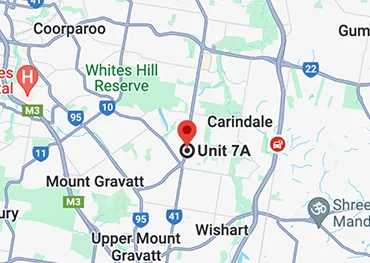
I must admit, I’m a huge fan of red light therapy, an increasingly popular non-invasive treatment method, that has achieved significant success in the health, recovery & beauty fields. I’ve been using it for the last 8 years and definitely rate it highly. Originally used to promote wound healing and improve skin texture, the application scope of red light therapy has gradually expanded to many fields such as skin care, pain relief, and cell regeneration. However, in recent years, a much-discussed question has aroused the curiosity of many people: Does red light therapy also have potential effects on weight loss?
Weight loss has been an important topic worldwide, inspiring a variety of different methods and techniques. Against this background, red light therapy has generated interest as a non-invasive, low-risk option for its potential effectiveness in weight loss. In this article, I’ll touch on the fundamentals of red light therapy, especially its relationship to fat metabolism, to answer the controversial question: Does Red Light Therapy Work for Weight Loss? I’ll also review scientific research, experimental results , and explore the practical applications of red light therapy in the beauty industry to help you gain a more comprehensive understanding of this topic.
Basic principles of red light therapy
Red light therapy, also known as low-energy laser therapy or low-energy light therapy, is a treatment that uses the red light band of the visible spectrum to promote cell repair and regeneration. This treatment uses red light of a specific wavelength, usually between 620 and 700 nanometers, which is noted for its high penetration capabilities. Red light penetrates the skin surface and is absorbed by cells, activating intracellular biochemical processes.

The relationship between red light and cell metabolism
Red light can increase energy production in cells and promote mitochondrial activity through the excitation of phytochrome. This increase in energy may lead to an increase in cellular metabolism, which aids in various biochemical reactions. During this process, the application of red light is thought to aid cell repair and regeneration, possibly having a positive impact on fat metabolism.
By understanding the basic principles of red light therapy, you can then explore its role in weight loss. Next, I will delve into the relationship between red light therapy and fat metabolism to more fully answer the question “Does Red Light Therapy Work for Weight Loss?”
A 2012 study published in the International Journal of Endocrinology looked at the effects of light on leptin and gastrin. Leptin is a hormone responsible for controlling appetite, helping maintain weight, and regulating the body’s energy expenditure. In contrast, gastrin increases appetite and stimulates the release of growth hormone. In this study, researchers surveyed participants with poor sleep habits. Decreased sleep levels tend to increase gastrin secretion while decreasing leptin levels, leading to weight gain. Their research showed that exposure to red light significantly increased leptin levels while decreasing gastrin. This reduction in hunger can have a big impact on those trying to lose weight on a low-calorie diet, helping to reduce hunger and the desire to snack.
In another study exploring how red light therapy can provide additional benefits during regular exercise, this study published in Lasers in Surgery and Medicine looked at the relationship between light therapy and Effects on metabolic inflexibility when used together with physical training. In this study, 64 obese women were divided into two groups. The control group participated in exercise training and received placebo light therapy. The second group participated in exercise training and received red light therapy immediately after exercise. Both groups underwent treatment three times a week for a total of 20 weeks. At the end of the study, the researchers observed a decrease in fat mass and an increase in total skeletal muscle mass and adiponectin concentration compared with the control group.
Conclusion
Red light therapy is a non-invasive, low-risk treatment that exhibits a range of potential weight loss benefits. From the response of fat cells to the promotion of fat oxidation, the mechanism of action of red light therapy provides the theoretical basis for its positive impact in the weight loss process.
Although red light therapy has shown some potential in the field of weight loss, more large-scale, long-term scientific research is needed to verify its true effect. Future studies could focus on differences in response among different populations, identification of optimal treatment options, and the use of red light therapy in combination with other weight loss methods.
Overall, the application of red light therapy in the beauty industry has achieved significant success, but its exact effect in the field of weight loss still needs to be supported by more empirical research. My view is your dietary intake is, and always will be number 1. After that exercise, lifestyle, activity. There is no substitute for these two ingredients. However, there are alternative methods that can assist in weight loss and red light therapy is certainly an option worth considering, given all the other proven health benefits that it can provide. Before trying it, it is recommended to seek the advice of a professional doctor or healthcare provider to ensure safety and suitability.
Zaid
Zua Health.
Contact us now for more information about our products or to book an appointment with a consultant, either by phone or in person.

15 Gateway Dr
Biggera Waters QLD 4216
Monday – Friday: 9:00am – 5:00pm
Saturday: 9:00am – 4:00pm
Sunday: 9:00am – 2:00pm

7/429 Creek Rd
Mt Gravatt QLD 4122
Monday – Friday: 9:00am – 5:00pm
Saturday: 9:00am – 4:00pm
Sunday: 9:00am – 2:00pm

2/306 Gympie Rd
Strathpine QLD 4500
Monday – Friday: 9:00am – 5:00pm
Saturday: 9:00am – 4:00pm
Sunday: 9:00am – 2:00pm

657 Ruthven St
Toowoomba QLD 4350
Monday – Friday: 9:00am – 5:00pm
Saturday: 9:00am – 4:00pm
Sunday: 9:00am – 2:00pm

SHOP 7 13-15 Glasson Dr
Bethania QLD 4205
Monday – Friday: 9:00am – 5:00pm
Saturday: 9:00am – 4:00pm
Sunday: 9:00am – 2:00pm